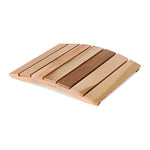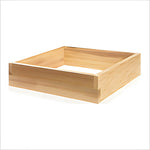You have no items in your shopping cart.

Transforming your garage floor can make a significant difference in the overall appearance and functionality of your space, and with interlocking floor tiles, this transformation can be complete in just an afternoon. But are interlocking floor tiles right for you? In this article, we’re going to explore the pros and cons of interlocking garage floor tiles, explain how they work and their benefits in greater detail, and help you decide whether or not they’re the best option for your garage space. Let’s take a look!
What are interlocking floor tiles?
Interlocking floor tiles are modular flooring systems designed to interlock or snap together, creating a seamless and attractive surface. These tiles are typically made from high-impact polypropylene, making them durable, easy to clean, and resistant to various chemicals, oils, and stains - everything you’re likely to find in your average American garage!
Interlocking floor tiles are also great on the visual front: for those looking to create unique and bespoke garage designs, they’re available in different colors, patterns, and textures to cater to individual preferences and design requirements.
What are the benefits of interlocking floor tiles?
There are several advantages to using interlocking floor tiles in your garage, which include:
Easy installation
One of the main benefits of interlocking floor tiles is that they can be installed without any need for professional assistance - all you need is a free afternoon and some elbow grease! With easy installation, you end up saving both time and money.
Customization options
If you’re looking to create a unique and visually pleasing space in your garage, you can find interlocking floor tiles in various colors, textures, and patterns, making it easier than ever to create a unique, personalized look or follow a visual theme.
Low maintenance
Interlocking garage floor tiles are easy to clean and stain-resistant, requiring minimal upkeep to keep them in tip-top condition. Most interlocking tiles - such as Swisstrax garage floor tiles - can be kept clean by using a vacuum or leaf blower, and using non-abrasive, mild soaps every once in a while.
Durability
Another benefit of interlocking garage floor tiles is that they’re built to withstand heavy loads and resist wear and tear; this makes them perfect for garage spaces, which are not only home to heavy cars and tools, but also the foundation for heavy cabinets and stacked storage.
Improved safety
Interlocking garage floor tiles provide a non-slip surface, reducing the risk of accidents in your garage. This is one of the main reasons that homeowners prefer tiling options over epoxy flooring; while Epoxy may look great, its super-sheen means it’s also super slippy, which can result in an increased chance of slips, falls, and other accidents.
Temperature resistance
Interlocking tiles are also designed to withstand extreme temperature fluctuations, making them suitable for various climates.
Easy replacement
Finally, another benefit of interlocking garage floor tiles is that it’s easy to replace parts of your flooring if part of it becomes damaged. If a tile gets damaged, it can simply be lifted and replaced, meaning you don’t need to replace the entire floor. Not only is this time-saving, it’s money-saving too.
Are interlocking floor tiles better than epoxy?
Both interlocking floor tiles and epoxy coatings have their pros and cons, but we’d always recommend interlocking floor tiles if you’re not sure which to opt for. Not only are interlocking tiles much easier to install and maintain, they also offer more customization options, and provide a safer, non-slip surface.
While epoxy coatings create a seamless, glossy finish and can in some cases be more cost-effective in the long run, the flooring itself tends to wear away more easily, and can be much more costly to repair. Plus, there’s the obvious safety question; having a slippery floor in a garage environment (where liquids, oils and other spillages are common) is a recipe for frequent accidents and falls. If you use your garage frequently - whether to store a car, work, or store important belongings - we’d recommend interlocking garage floor tiles.
How are interlocking floor tiles installed?
So - if you do opt for interlocking floor tiles, the installation process is incredibly straightforward and doesn’t require much in the way of specialized tools or professional assistance. Here’s a step-by-step guide:
Pick your tiles
Before beginning anything, make sure to shop around for the best interlocking floor tiles. You can take a look at our best garage floor tiles of 2023 if you’re in need of some inspiration!
Measure and prepare the area
Ensure the garage floor is clean and dry. Measure the space to determine the number of tiles needed.
Choose the layout
Plan your tile pattern and layout before installation. This will help avoid mistakes and create a visually appealing design.
Start from a corner
Begin laying tiles from one corner of the garage, working your way outwards. Align the tiles and press down firmly to snap them together, ensuring a secure fit.
Cut tiles as needed
If necessary, use a utility knife or jigsaw to cut tiles to fit around obstacles or edges. You’ll want to ensure you use property safety equipment and follow safety protocols when doing this.
Install edge ramps
Add ramps or transition strips along the garage entrance for a finished look and to prevent tripping hazards.
And there you have it! Easy to install, long-lasting and durable for all the wear and tear of a garage environment, interlocking floor tiles are one of the simplest ways to transform your space.









